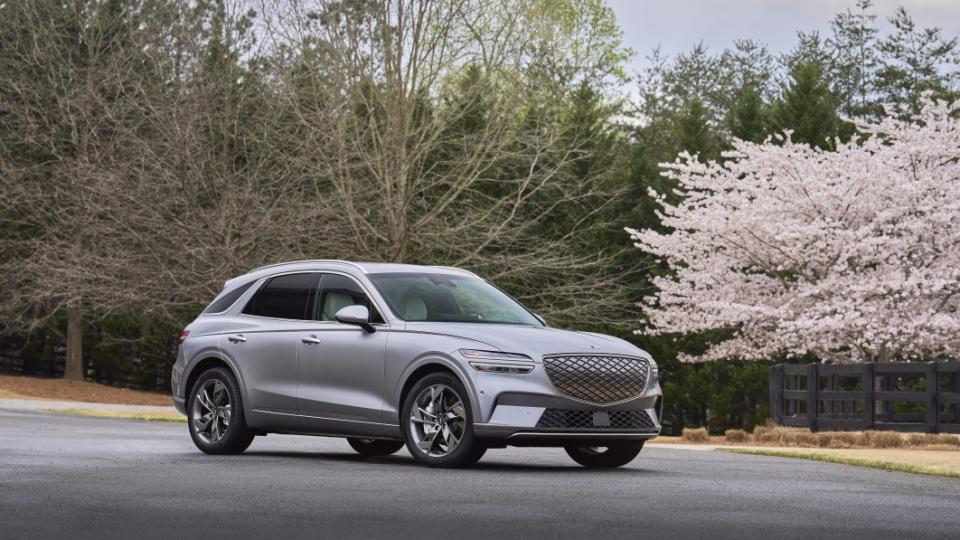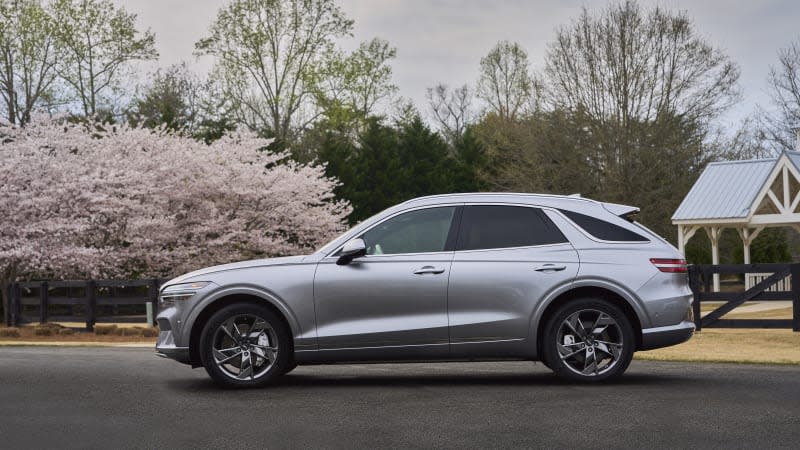Genesis' decision to build the Electrified GV70 in America is a sign of things to come

As Steely Dan famously sang, they call Alabama the Crimson Tide. Here in Montgomery, we’re knee-deep in a Green Tide that’s transforming the business of building and selling cars. The high-style Genesis Electrified GV70 emerging from Hyundai Motor Manufacturing Alabama (HMMA) is the first Genesis built outside South Korea. It’s only the second made-in-America EV from a foreign-based automaker, after the Volkswagen ID.4 whose Tennessee production kicked off in July.
Get ready for many more. Spurred by the Inflation Reduction Act — whose final interpretations and outcomes remain in Washingtonian flux — automakers foreign and domestic are scrambling to onshore EV-and-battery production to boost American jobs and security, as a condition to securing lucrative tax incentives for manufacturers and consumers. Beginning in 2024, qualifying for EV credits may even require sourcing a hefty percentage of minerals and other battery materials from America or approved trade partners, a list that conspicuously does not include China or Russia. As things stand, that sticking point could make a vast number of 2024 EVs ineligible for purchase credits; though leasing a vehicle may still earn dealers a $7,500 commercial credit that they could pass along to consumers, as most currently do for EV lessees.
The electric version of Genesis’ most-popular SUV is the avatar of Hyundai Motor’s $10 billion American EV investment, which is expected to foster up to 8,000 good-paying jobs. Even that’s a fraction of what Atlas Public Policy estimates to be $128 billion in industry-wide investment in America’s EV, battery and recycling capacity through 2030 alone. Hyundai’s planned onshore footprint includes a new battery factory northwest of Atlanta, and a $5.5 billion EV factory near Savannah that aims to produce Hyundai, Kia and Genesis EVs beginning in 2025. Beginning that year, Genesis says every new model introduced will be an EV, with no fossil-fuel option. And Genesis plans to phase out gasoline-powered models entirely by 2030, a similar timeline to luxury brands including Volvo and Cadillac.

In Alabama, where Hyundai also builds the Elantra, Sonata, Santa Fe and Santa Cruz, an Electrified GV70 is hoisted onto a lift for the final stop on its 16-hour assembly journey. As politicians, stakeholders and some of the factory’s 3,800 proud “team members” look on, an Automated Guided Vehicle on magnetic tracks boosts a pre-assembled, 77.4 kWh battery pack – for now, imported from South Korea — into its raised undercarriage. Workers quickly secure the pre-charged battery’s 26 bolts, then plastic underbody shields, followed by a coolant fill, a computerized battery-health check, and finally a run around HMMA’s 2.3-mile test track to check for rattles or drivability issues. For the priciest model (by far) ever produced at HMMA, this workstation is the only standalone stop for the Genesis, because the battery marriage takes longer than the roughly 52-to-57-second time allotment at every other station. Elsewhere on the assembly line, workers install the Genesis’ dual electric motors — with 160 kilowatts each, for a total 429 all-wheel-drive horsepower — in nearly the identical time it takes more-plebian Hyundais to receive an ICE powertrain.
Driving the Electrified GV70 offers more reasons to watch the clock: A “Boost” button, prominently displayed on the Genesis’ striking, pillowy steering wheel, kicks output to a hefty 483 horsepower for 10-second bursts, with max torque unchanged at 516 pound-feet, or 56 more than a Corvette Z06. More time is saved at a standstill, with an 800-volt architecture that allows charging at up to 350 kilowatts. Like the smaller GV60, Hyundai Ioniq5 and Kia EV6, the GV70 can refill its battery from 10-to-80 percent in as little as 18 minutes.
A good thing, because owners get their first 30 minutes of fast charging for free at Electrify America stations, over three years.

 Yahoo Autos
Yahoo Autos 
